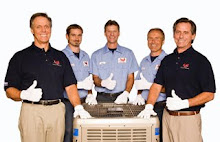http://www.asiheatingandair.com
Below is an asthma and allergy checklist to help you fight airborne allergy, asthma & upper respiratory problems. Keeping indoor dirt, dust, pollen's, and other indoor air pollutants out of your home will help you improve your indoor air quality. (IAQ) Many of these allergy solutions below cost little or no money.
1. Remove your shoes before entering your home. Wears slippers or have a pair of indoor shoes that never see the outdoors.
2. Don't use a large whole house or large exhaust fan as they draw unfiltered air into your home. You can easily design system to ventilate your home with clean filtered air. An HVAC (heating, ventilating and air conditioning) professional can assist you with such a design and installation.
3. Use your kitchen exhaust hood while using your stove to eliminate cooking smoke or products of combustion. This is especially critical with gas stoves.
4. If you have a large exhaust fan in your kitchen, be sure to have a makeup air system. An HVAC professional can assist you with the design and installation
5. Use of a HEPA or central vacuum system will minimize the amount of small irritating particles that become airborne while vacuuming your home.
6. If you don't have a central vac system, vacuum your home while allergy sufferers aren't home.
7. Circulate the air in your home with your furnace or heat pump while vacuuming. This will move the air through your air filter. This can generally be accomplished by going to your thermostat and operating your system in the “fan on” position. Older systems may not have this feature.
8. Use a whole house a high-efficiency air filtration & UV air purification system to remove and purify the air in your home.
9. Use vertical blinds in place of fabric draperies or horizontal blinds to reduce dust to accumulation on window coverings.
10. Use hardwood and tile floors whenever possible. Carpet traps many allergens and indoor air pollutants.
11. Use a portable air filter in areas that are most commonly occupied by allergy sufferers. Bedrooms areas are highly recommend.
12. Have you air conditioner and furnace maintained annually to keep mold, dirt and other pollutants from accumulating in your system.
13. Be careful when choosing and using household cleaners and solvents. Gases from these products create VOC’s (volatile organic compounds) and are a major source of indoor air pollution.
14. Adding a whole house humidifier will help minimize the discomfort cause by dry air associated with running your heating system in the winter.
15. Remove large numbers of stuffed animals from bedrooms, at the very least be sure they're clean.
16. Wash sheets and pillowcases in hot water weekly. Use pillow & mattress covers to avoid skin flakes and household dust from impacting mattresses.
17. A properly ventilated bathroom minimizes potential mold build up
Be careful about using disinfectants deodorizers and air cleaners, if you wouldn't drink it you probably shouldn't breathe it.
18. Have the ductwork in your home inspected. Leaky ductwork is a major source of indoor air pollution and wasted energy.
19. Remove or isolate pets that might cause children severe allergy symptoms.
20. Keep pets out of beds and off furniture whenever possible.
skip to main |
skip to sidebar

Followers
Blog Archive
Subscribe Now
About Me

- ASI Hastings
- ASI Hastings is San Diegos most trusted Heating and Air COnditioning Contractor